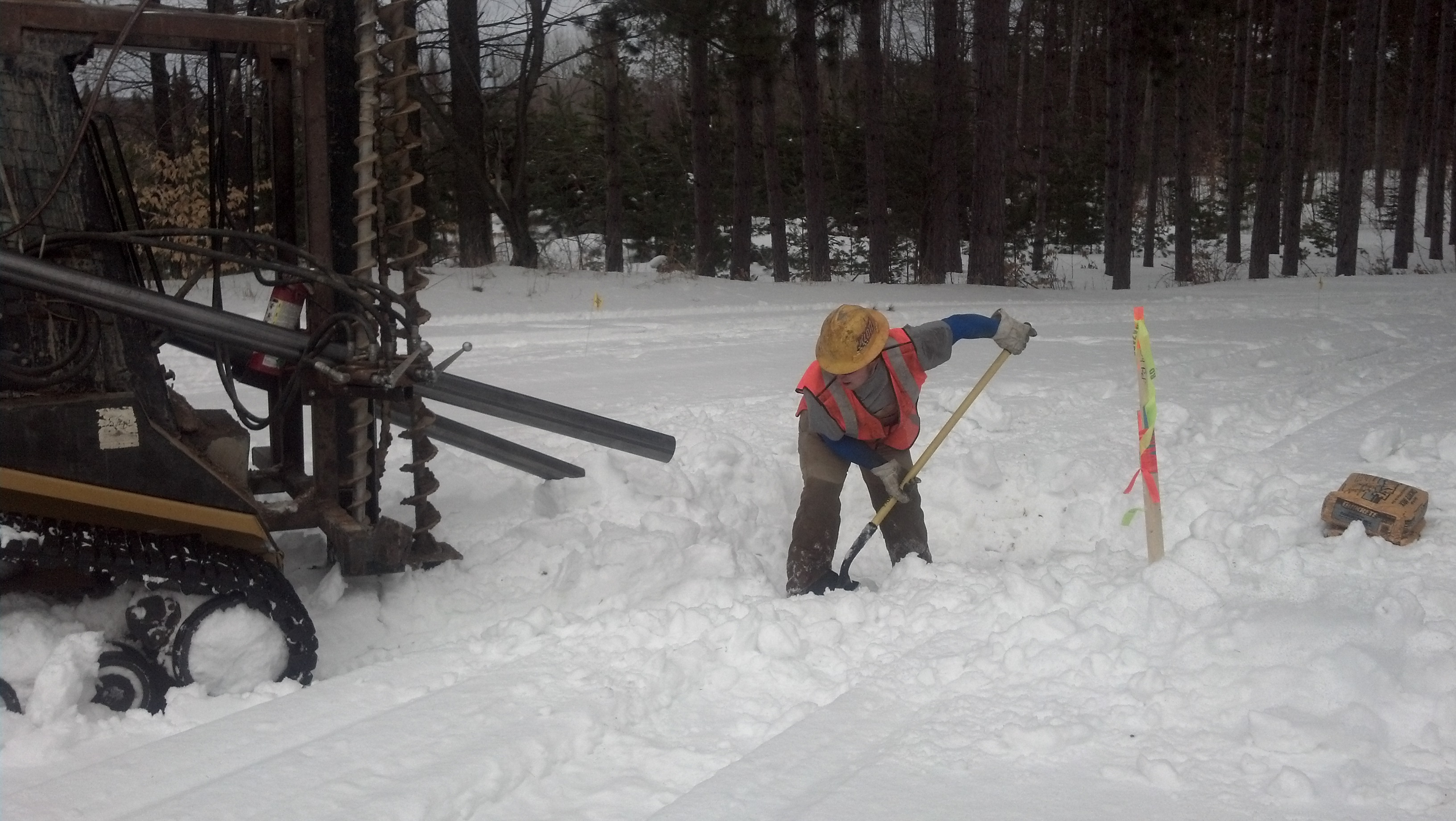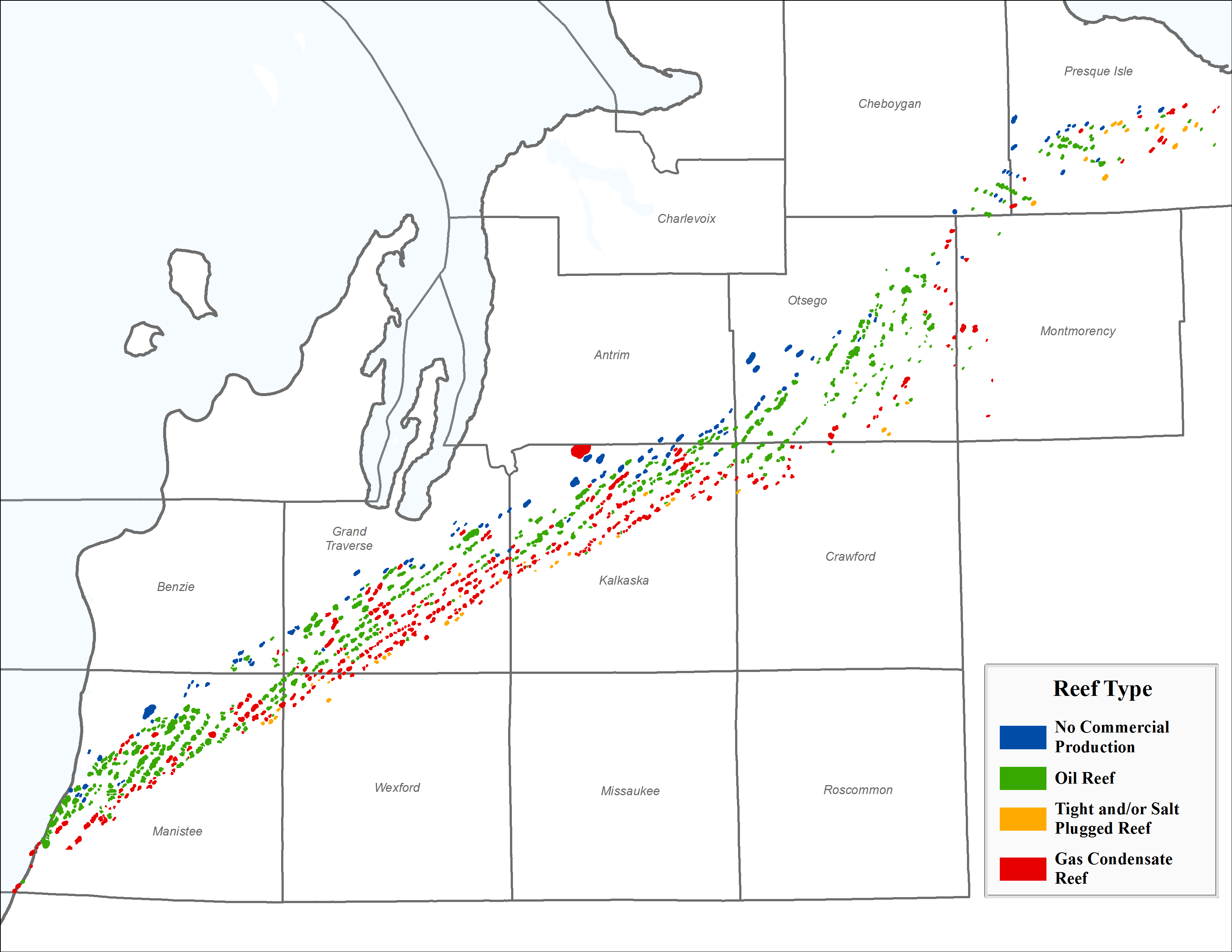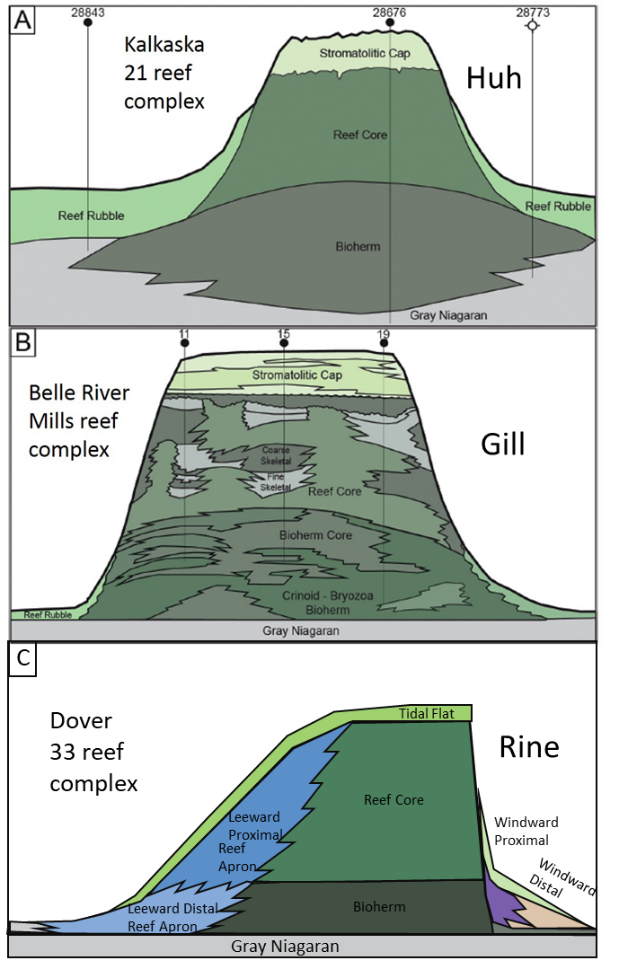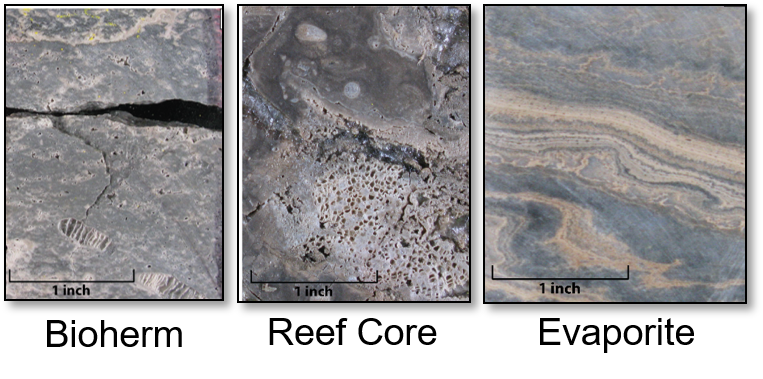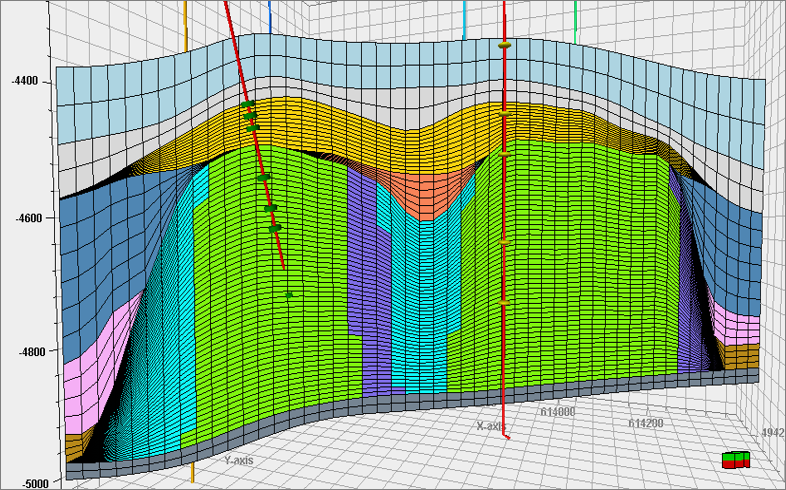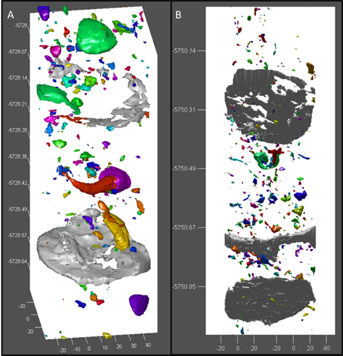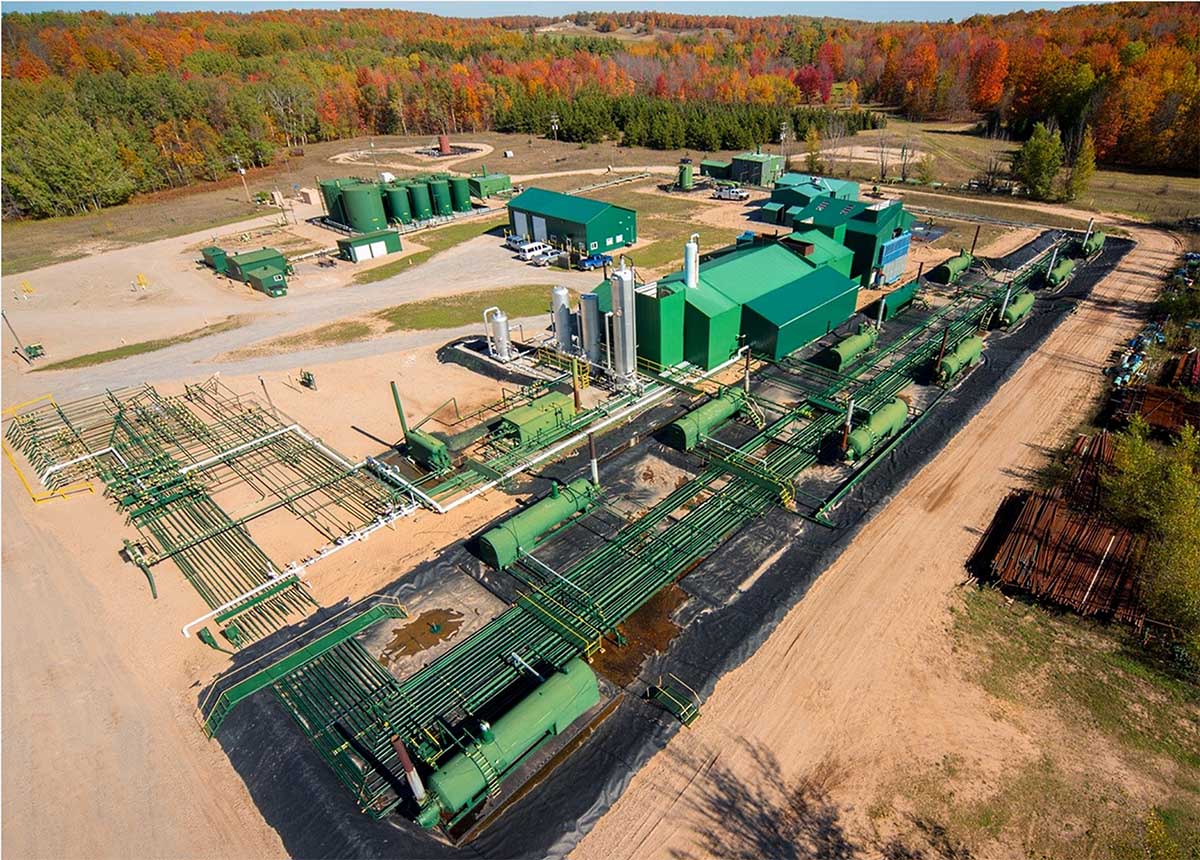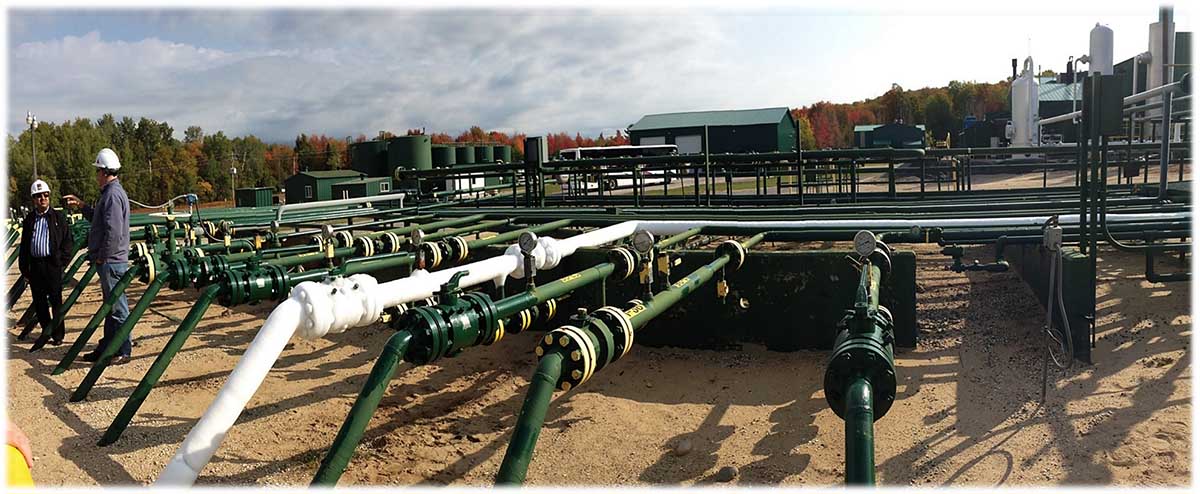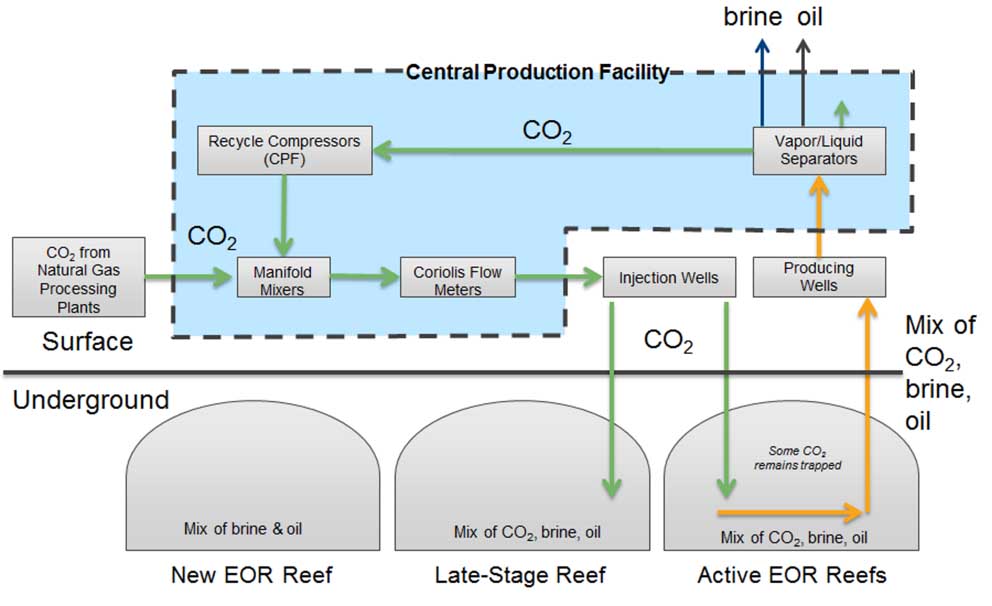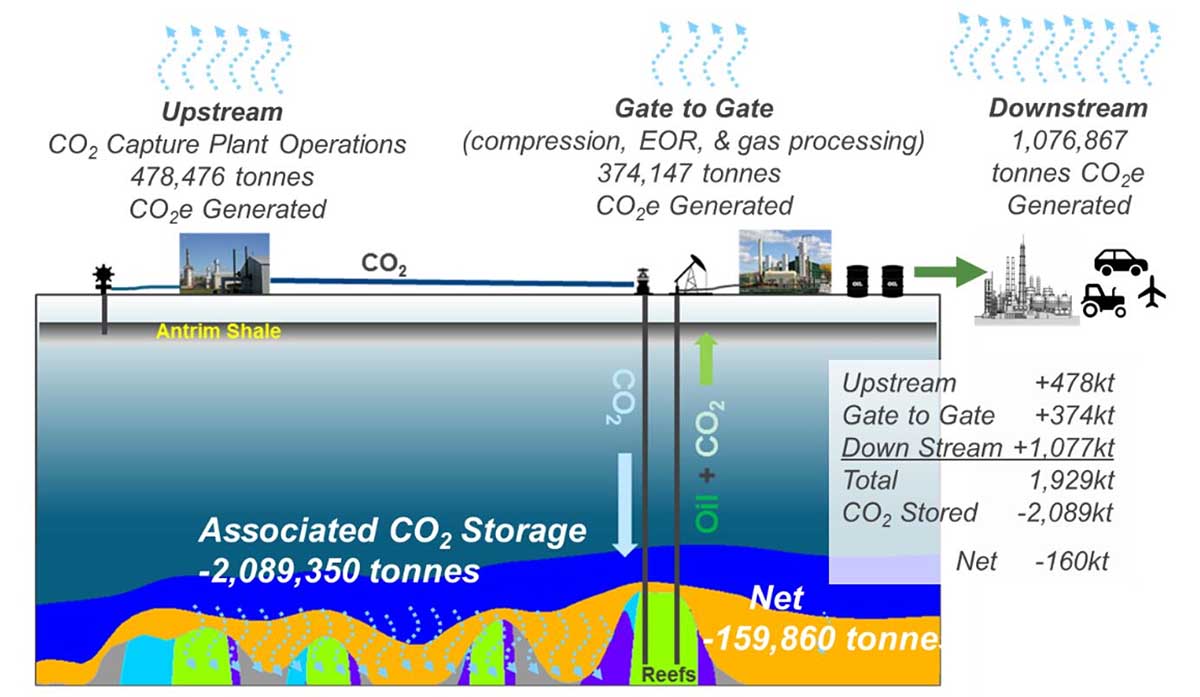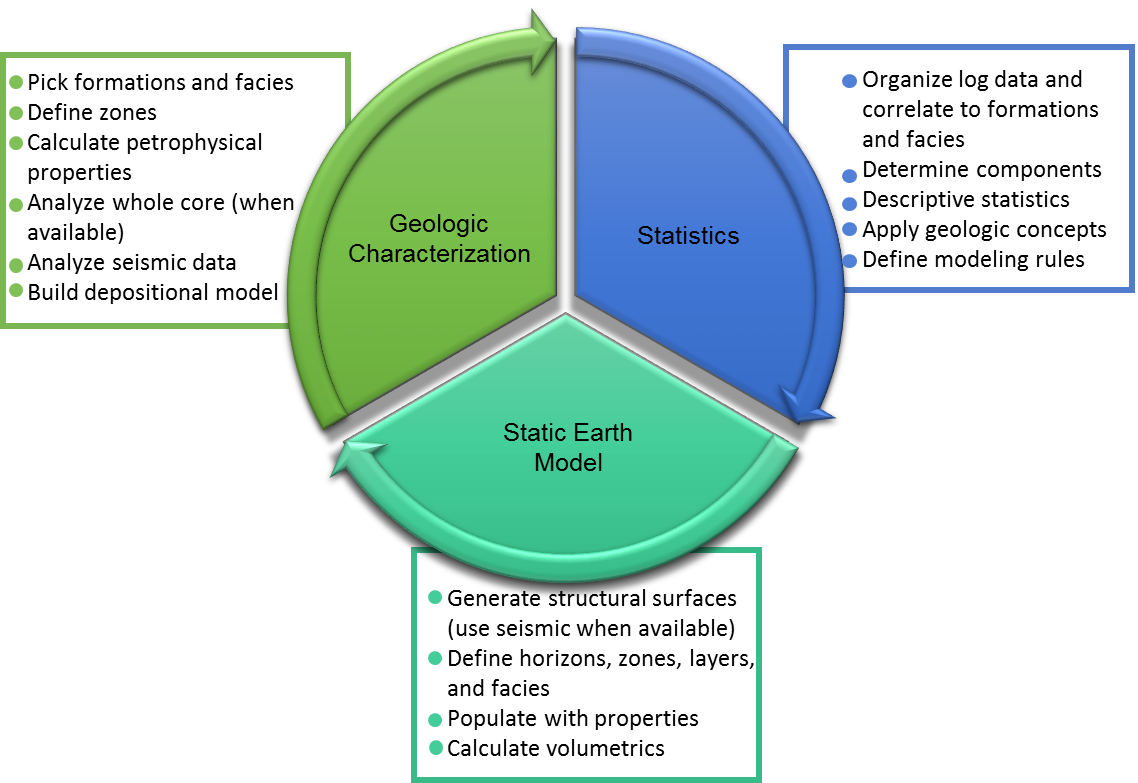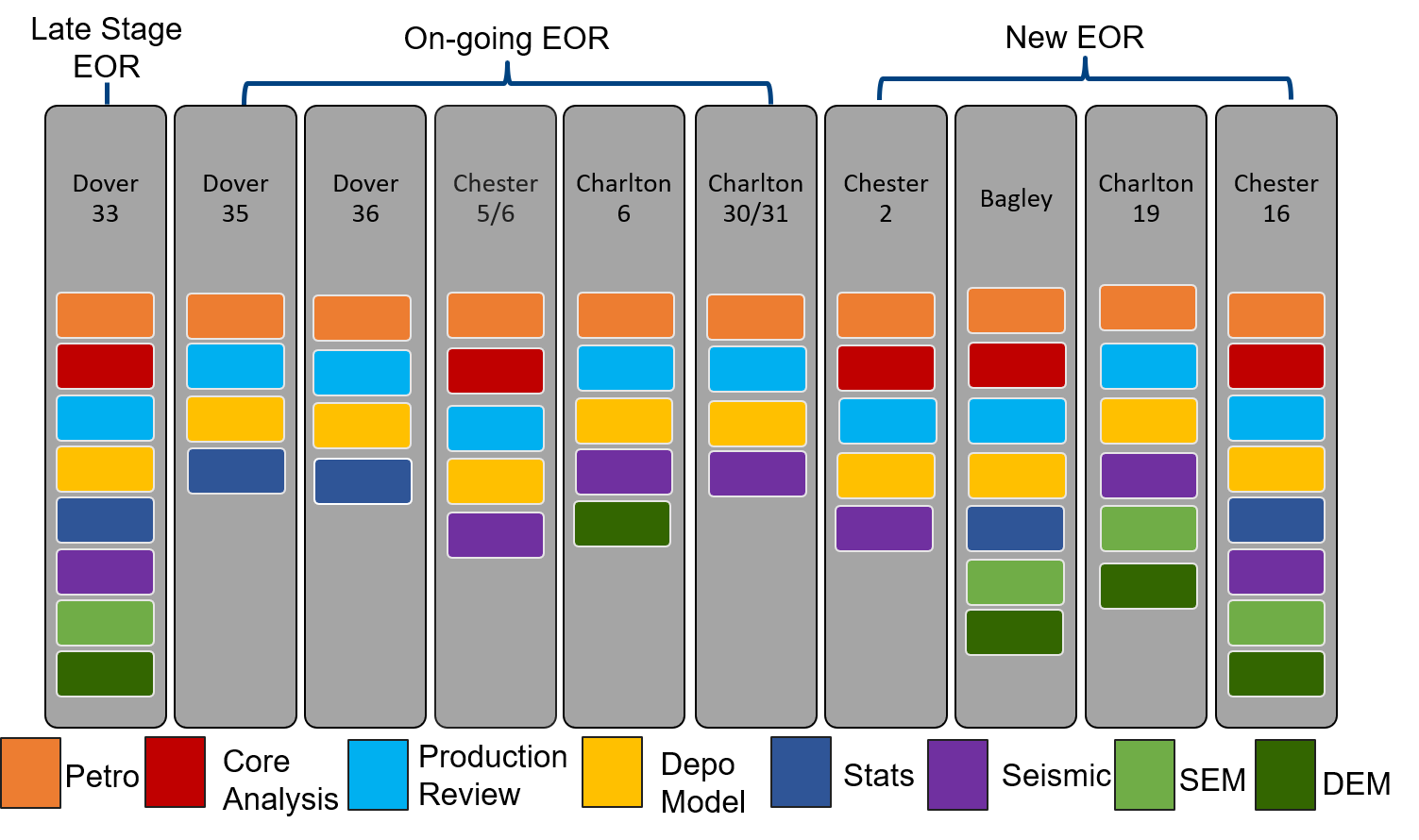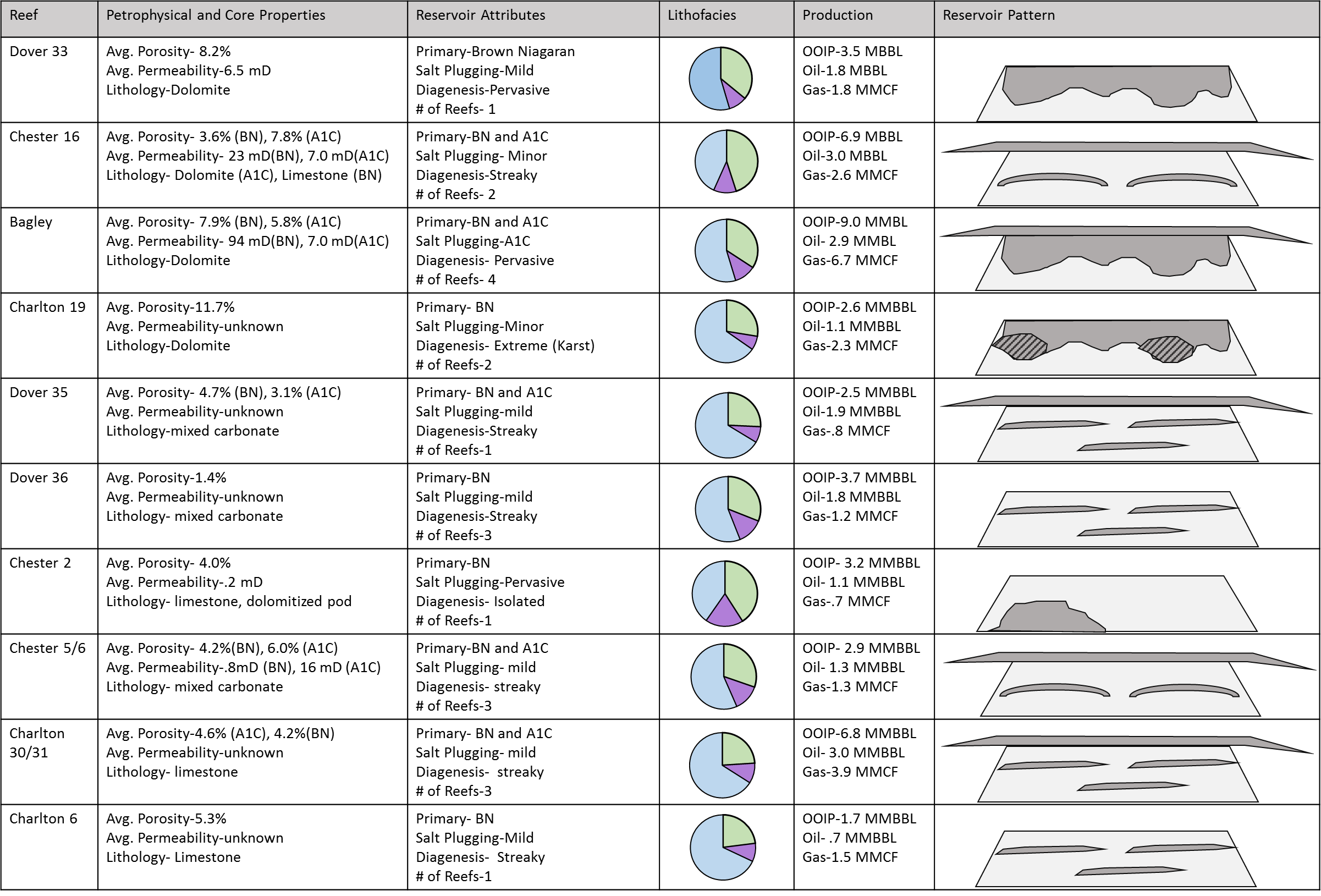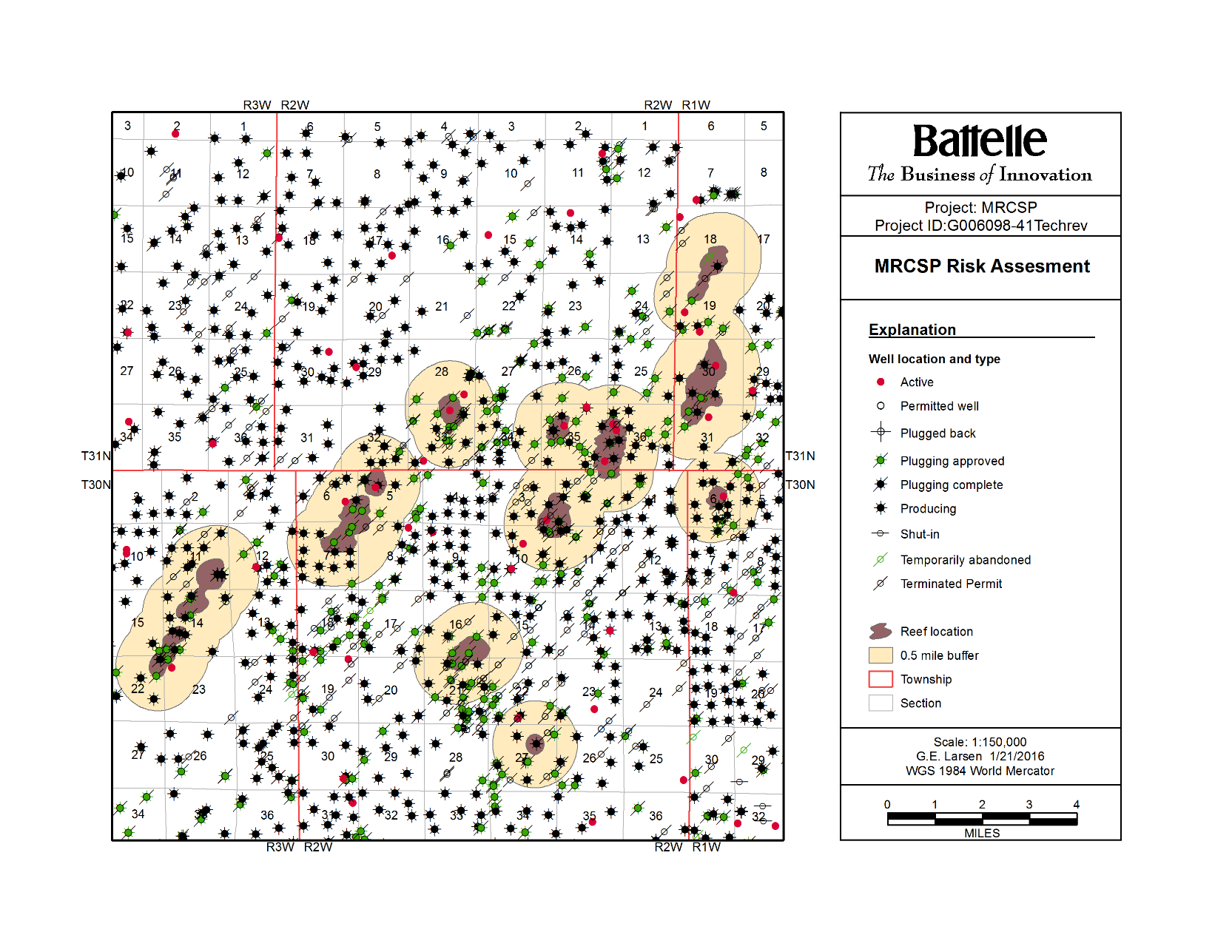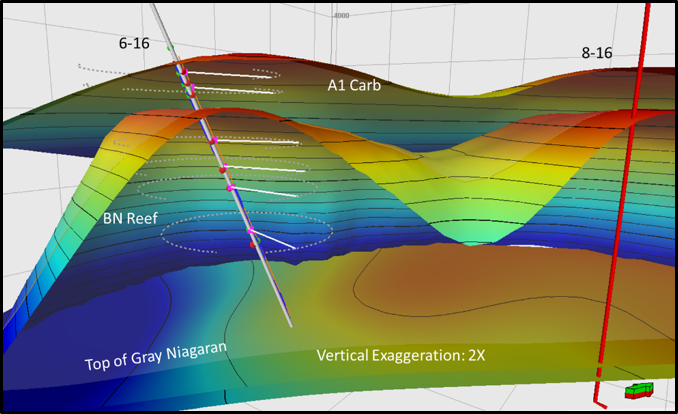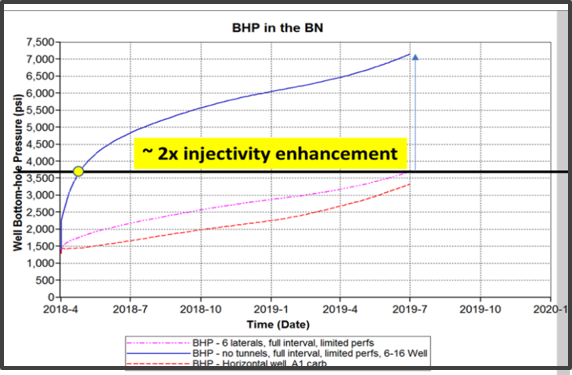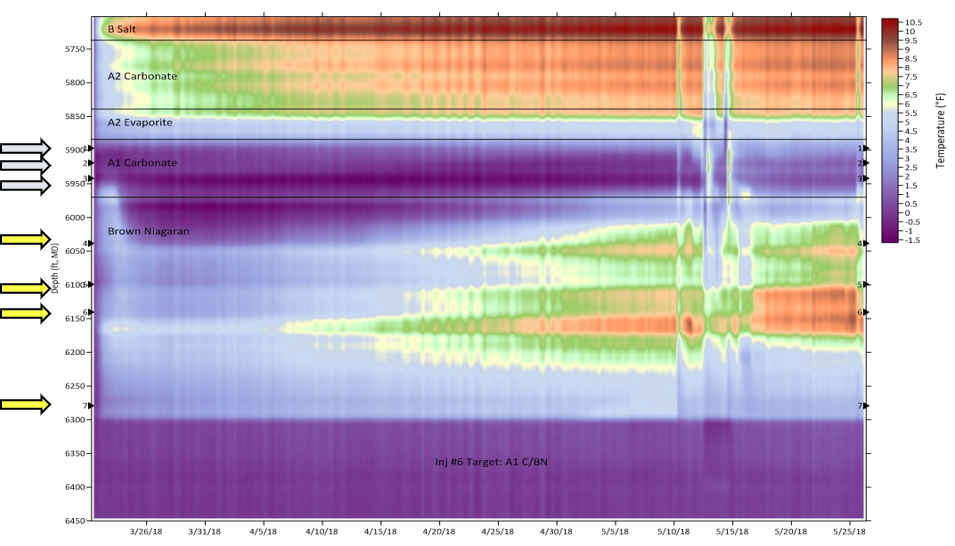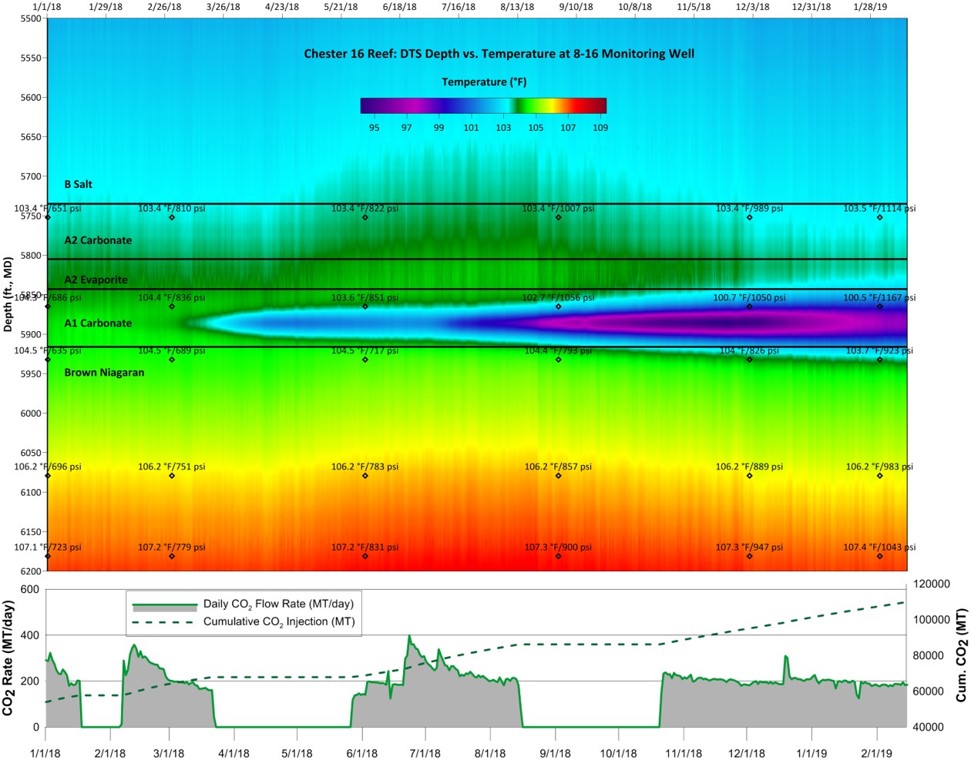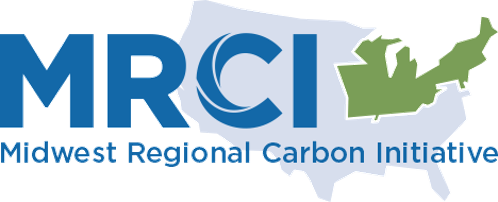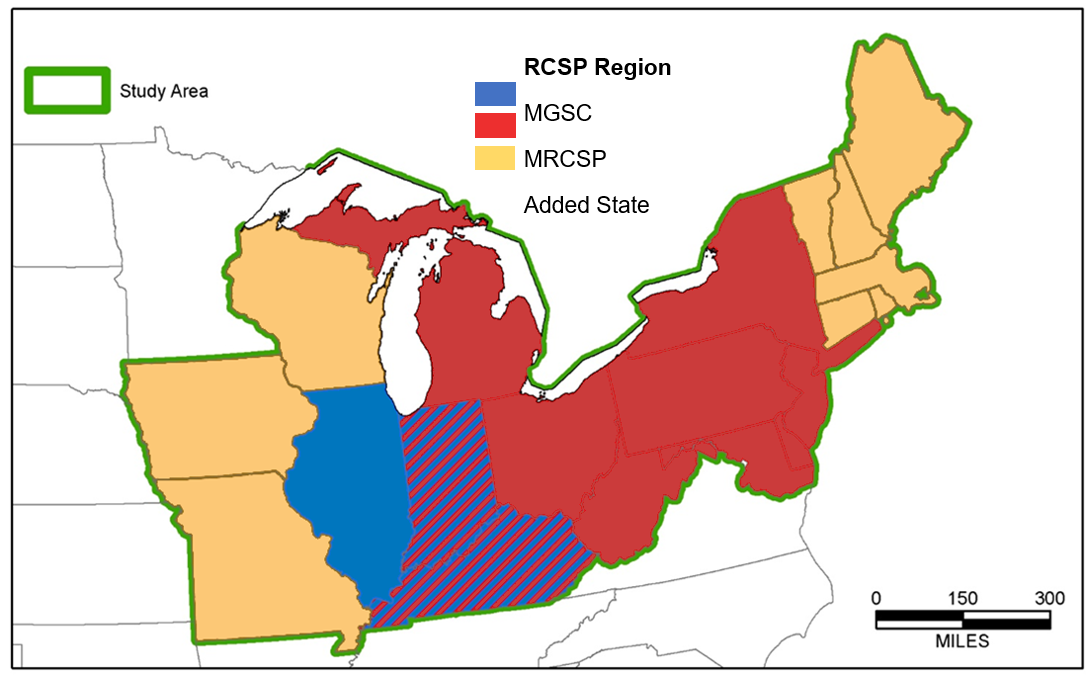Carbon Storage Atlas
- Why this Location
- Main Research Q&As Discovered
- Advice for Future Operators
- Field Site Story of Interest
- Geologic Details
- Project Introduction and Site Operations
- Site Characterization
- Risk Assessment
- MVA
- Commercial Viability of CCUS
Lat/Long
The Midwest Regional Carbon Sequestration Partnership (MRCSP) large-scale tests were conducted in Otsego County in northern Michigan Lower Peninsula. The field work was completed in carbon dioxide (CO2)-enhanced oil recovery (EOR) oil fields that inject CO2 and produce oil from a buried coral reef complex called the Niagaran Reefs. This area has a history of oil and gas production that provided infrastructure for the Phase III project, which included a CO2 pipeline, natural gas processing facility, CO2 compression equipment, oil processing facility, and injection wells. The geologic reef structures were approximately 1,524 to 2,134 meters (5,000 to 7,000 feet) deep in the subsurface. Locally, the area consisted of light forest, agriculture, and rural land use.
Why this Location
The Midwest Regional Carbon Sequestration Partnership (MRCSP) explored multiple sites for a Phase III injection site, looking for an area that would have secure storage, existing infrastructure, a carbon dioxide (CO2) source at the needed scale, and a willing operator. Two preceding locations were evaluated, prior to finalizing the CO2-enhanced oil recovery (EOR) fields operated by Core Energy. The first location, a large ethanol plant, posed significant stakeholder challenges, which could have delayed the project. The second location, a deep saline storage site, was changed because newly enacted Class VI regulations posed design, monitoring, and budget uncertainties beyond the project scope. The final CO2-EOR location allowed the team to meet the project objectives using existing and new wells permitted under well-established Class II regulations, rather than the newly enacted Class VI protocols.
The Niagaran Pinnacle Reef Trend met all the project criteria at an expedited timeline and is a regionally significant resource for hydrocarbon production and CO2 storage. The reefs represented a complex reservoir with geologic variability, a long history of oil and gas production, and the only field in the region that had active CO2-EOR operations with certainty of CO2 access. The location, and a highly collaborative operator, allowed MRCSP to test a portfolio of technologies in a distributed EOR setting that resulted in an evaluation of feasible technologies and methodologies for carbon capture, utilization, and storage (CCUS) in these settings. Access to up to 10 discrete fields, all with varying well configurations, EOR life cycle stages, geology, and operational history, enabled testing of a diverse portfolio of characterization, modeling, and monitoring. Finally, real-life CCUS deployment aspects, such as CO2 accounting, instrumentation, and measurement, reporting, and verification (MRV) plans, could be performed at the selected site.
Main Research Q&As Discovered
The Midwest Regional Carbon Sequestration Partnership (MRCSP) aimed to answer the overarching question: Can it be done? The extensive program demonstrated that carbon capture, utilization, and storage (CCUS) can safely and economically be conducted in enhanced oil recovery (EOR) fields by exploring the following research questions:
MRCSP research completed injection of more than 2 million metric tons of CO2 into carbonate Niagaran Pinnacle Reefs at the large-scale field site in Michigan. In addition, several piggy-back injection tests in deep carbonate rock intervals in Ohio confirmed CO2 injection potential in the MRCSP region.
The containment of CO2 in the deep subsurface reservoirs was demonstrated through site characterization and monitoring of the field testing. The reefs proved to be especially effective “containers” for CO2, with no evidence of CO2 leakage, out-of-zone pressure movement, or wellbore integrity issues.
The MRCSP field tests demonstrated that basic pressure and temperature monitoring of the injection and storage zones can provide high-value information when integrated with reservoir modeling. Other technologies were investigated for feasibility and suitability in the region. Some of these methods were not as conclusive due to the nature of the deep rock formations and site conditions.
Overall, the field testing confirmed the CO2 storage potential in the Niagaran Reef Trend in Northern Michigan. Analysis of 800+ reefs in this trend suggested these rock formations may store more than 250 million metric tons of CO2.
MRCSP research confirmed the presence of diverse options for CO2 storage in the region. Together, these deep rock formations have the potential to store many gigatons of CO2 over geologic time periods. The storage options are not uniformly distributed across the region. Therefore, CCUS projects need to consider local options for CO2 storage.
Advice for Future Operators
The Midwest Regional Carbon Sequestration Partnership (MRCSP) evaluated the overall value chain for carbon capture, utilization, and storage (CCUS) deployment for an active commercial carbon dioxide (CO2)-enhanced oil recovery (EOR) project, showing its technical and economic viability in safe storage of CO2. It has also shown that the CO2 accounting for historic and ongoing operations can be performed with confidence and under the right conditions, and that CO2-EOR can provide a net carbon-negative option. The monitoring, reporting, and verification (MRV) plan prepared for the MRCSP site can be a template for other MRV plans. The site characterization, modeling, and monitoring research provides useful examples for commercial projects. For example, it is shown that monitoring options must account for local geologic and operational conditions before a monitoring plan is finalized. Together, these items provide confidence in the CCUS process, precedent of safe CO2 storage projects, confidence in the permitting process, and understanding of the cost factors related to the CCUS projects. On a global basis, the reports and papers published from MRCSP work will help in acceptance and adaptation of CO2-EOR as a carbon mitigation technology, which can safely and securely store CO2 and produce oil with a significantly reduced carbon footprint.
Field Site Story of Interest
The Midwest Regional Carbon Sequestration Partnership (MRCSP) Phase III field site was located outside of Gaylord, Michigan, which receives an average of 358 centimeters (141 inches) of snow per year. That is nearly twelve feet of snow! The snowfall presented challenges to the field work associated with carbon dioxide (CO2) injection and monitoring activities. The interferometric synthetic aperture radar (InSAR) satellite reflectors had to be specifically designed to shed snow so that they would provide accurate satellite elevation readings. The wellheads were also constructed to allow access in the deep winter snow. In the spring, “frost laws” limited heavy equipment traffic to protect local roads as they thaw out from the long winter. Therefore, it was easier to complete some field work in the winter when access roads were frozen. Field staff were not so happy to be frozen. Winter storms often provided an incentive to quickly finish up field work. Even in the spring and summer, the CO2 pipeline still had a “white frost” coating along the outside of the pipe related to CO2 slightly depressurizing and cooling along the length of the pipeline.
Geologic Details
The Northern Pinnacle Reef Trend is composed of more than 800 Silurian-age (Niagaran) reefs. The reefs have complex internal architecture, lithology, and diagenetic changes that strongly affect the storage capacity and reservoir performance of each individual field. The reservoir rocks in the Brown Niagaran (reef) and overlying A-1 carbonate may be completely dolomitized, all limestone, or a heterogeneous mix. Reservoir quality is generally enhanced by dolomitization and secondary porosity. The interpretation of the internal architecture of the reef system has changed over time, beginning with a symmetrical, homogeneous interpretation, and moving into asymmetrical heterogeneous interpretation. Work conducted by the Western Michigan University team, through the Midwest Regional Carbon Sequestration Partnership (MRCSP), has demonstrated that the reefs are more asymmetrical due to paleo-wind direction and have predictable facies. The heterogeneity occurs at all levels, from the reef level (division of distinct lithofacies) to the facies level (secondary porosity in the form of vugs and fractures, salt and anhydrite plugs, etc.).
Project Introduction and Site Operations
The Midwest Regional Carbon Sequestration Partnership (MRCSP) covers 10 states: Delaware, Indiana, Kentucky, Maryland, Michigan, New Jersey, New York, Ohio, Pennsylvania, and West Virginia. This region has a diverse range of large-point sources and has many opportunities for reducing carbon dioxide (CO2) emissions through geologic storage. The Michigan Basin Project was the Phase III (Development Phase) project of the MRCSP program to implement a geologic injection test of 1 million metric tons of CO2 and demonstrate the potential for commercial-scale geologic storage of CO2. The large-volume injection test was conducted in collaboration with enhanced oil recovery (EOR) operations, enabling research on concurrent utilization of CO2. The CO2 supply for the EOR was from processing of the natural gas from the overlying Antrim Shale formation, which contains 5 to 30% CO2 in the gas stream. The CO2 was separated from the natural gas, compressed to approximately 1,000 pounds per square inch (psi), pipelined approximately 16 kilometers (~9.9 miles) to a central processing facility, and then distributed to the injection wells. The CO2 was injected into the deep oil reservoirs to mobilize oil trapped in the rock pore space. The mixture of oil and CO2 was then produced and processed to separate the CO2 and oil streams. The CO2 was then recycled back into the reefs or permanently stored in highly depleted reservoirs.
The overall reef complex consists of more than 800 fields, but EOR started in a single field in the mid-1990s and has currently expanded to 10 fields. In 2013, MRCSP started a comprehensive program of characterization, measurement, accounting, modeling, and monitoring to research all aspects relevant to CO2 utilization and storage in the complex. The reef complex includes fields that have undergone EOR (late-stage life cycle), those undergoing EOR (operational), and those where injection started during the MRCSP Phase III (new fields). This allowed MRCSP to deploy an evolving portfolio of characterization, monitoring, and modeling approaches, which could be customized based on individual field settings (geologic, size, production history, well configurations, and EOR plans), and incorporate lessons learned from initial reefs.
A key issue in commercializing CO2-EOR-related storage is to develop an accurate accounting of the CO2 being stored in the process. As a site with growing EOR operations and with pre-MRCSP injection, the site offered challenges of recreating the history of past operations from records and accounting for recycling losses, upgrading of instrumentations to reduce the uncertainty in measurement, and evaluating the life-cycle CO2 mitigation benefit. The detailed accounting shows that during the MRCSP monitoring period (February 2013 to September 2019), 3.41 million metric tons of CO2 was injected, 1.88 million metric tons of CO2 was produced/recycled, and a net 1.53 million metric tons of CO2 was stored in the 10-reef EOR complex. During this time, 1.06 million barrels of EOR oil was produced. The detailed accounting information, along with site characteristics, were used to prepare a monitoring, reporting, and verification (MRV) plan, which was submitted to and approved by the U.S. Environmental Protection Agency (EPA) Greenhouse Gas Reporting Program (40 CFR Part 98, Subpart RR). This approved MRV plan is required for obtaining tax credits under section 45Q – a key driver for commercializing carbon capture, utilization, and storage (CCUS) in the United States. Finally, the life cycle study for 22 years of operation showed that the EOR operations in the reef complex are overall net carbon-negative, even when emissions from upstream CO2 capture, EOR operations, and downstream combustion of production oil are included. This supports the acceptability of CO2-EOR as a climate mitigation option.
Site Characterization
Historical wireline and 3D seismic data was supplemented with core data from analog reefs in the surrounding area to characterize the geology and to build conceptual geologic models. The distribution of large-scale physical structures was derived primarily from seismic data, while existing wireline logs helped delineate the stratigraphy, infer the depositional environment, and characterize the porosity of the reef. Where available, whole and/or sidewall rock core data was integrated into the characterization to improve the understanding of porosity distribution and develop a porosity to permeability transform. Five of the study reefs had both wireline and core data and underwent a statistical analysis to better inform the static model properties. Geologic characterization was augmented by using historical production data to build dynamic reservoir models. The level of characterization varied by reef and was dependent on data availability.
Reservoir injection testing was completed to confirm the properties of the subsurface reservoir zones. These tests were especially useful to match the model predictions and estimates of enhanced oil production. Geomechanical testing and analysis was also completed to determine the sonic properties and fracture pressure in the reservoirs to evaluate safe injection pressures and assist in seismic monitoring technologies.
The most important outcome of the site characterization work was the development of site characterization methods for these complex reservoirs so that each reef was consistently interpreted and the geologic variability was captured. The variability in reservoir characteristics included:
- The reef geometry and complexity varied based on number of fully or partially connected pods/lobes in the production units. Production was predominantly recorded from the Brown Niagaran formation; five reef fields also recorded production from the overlying A-1 carbonate.
- The reefs under study had a lithology trend that matched the regional interpretation of more dolomitization up-dip. The Dover 33, Bagley, and Charlton 19 reef fields were predominantly dolomitic. The Chester 16, Chester 2, and Charlton 6 were limestone.
- Salt plugging was observed to some degree at all reefs, but varied from minor (Charlton 19) to extremely pervasive (Chester 2). The salt plugging may limit injection and storage capacity if pore space is not accessible, an important issue for carbon dioxide (CO2) storage.
- Diagenetically enhanced porosity ranged from extreme (karst) to streaky in the reefs, which influenced the reservoir pattern. In dolomitized reefs, porosity trended higher toward the top, while limestone reefs were streakier in nature.
- Average reef porosity ranged from 1.4 to 11.7%, with average permeabilities up to 94 mD. Dolomitic reefs have higher porosities and net-to-gross ratios in the Brown Niagaran, while limestone reefs are higher in the A-1 carbonate.
- Diagenesis and degree of salt plugging were assigned ranks and plotted with porosity and oil recovery to illustrate reservoir quality. When plotted using porosity, Charlton 19 was ranked as the best reservoir, followed by Dover 33 and Bagley. When plotted with percent recovery, Dover 33 and Chester 16 were the highest. The porosity method assumes that log porosity is indicative of good reservoir. Percent recovery is a good indicator of reservoir quality; however, it is dependent on well design and estimated original oil in place (OOIP).
- The confining units (A-2 evaporite and A-2 carbonate) had little to no porosity with common salt plugging. Evaporite often caused challenges when interpreting properties from wireline logs. The ultimate confining unit is the Salina B-salt, which is approximately 91 meters (~300 feet) of massive salt.
Risk Assessment
Risk Assessment: At the beginning of the large-scale project, the Midwest Regional Carbon Sequestration Partnership (MRCSP) team conducted a risk assessment, which was designed to provide guidance on injection system operations, the monitoring program, reservoir simulations, and other project activities. To support the risk assessment, a systematic survey of the site features was completed to describe geologic setting, surface features, and risk pathways. Based on this information, three main risk assessment activities were completed:
- Risk screening based on leakage pathway analysis and features, events, and processes (FEP) programmatic review of risks that may inhibit project performance or safety.
- Activity-based “what-if” analysis of technical risks inherent to the scientific and engineering objectives of a carbon capture, utilization, and storage (CCUS) project. This included determination of mitigation steps to reduce the risk before moving to field execution.
- Site-specific review of wellbore integrity for wells near the reefs, which included analyses of well construction, well status, plugging and abandonment details, and cement bond logs to systematically rank wells.
The findings of risk assessment were used to guide the project activities in the field and any operations deemed to be too risky were either eliminated or migration steps were developed to reduce risk to an acceptable level. Development of field safety plans and adherence to both Battelle and oil field safety practices were key requirements.
Reservoir Modeling: The reservoir modeling exercise for simulating oil production, carbon dioxide (CO2) injection, and associated storage in these reefs entailed two phases.
The first phase, geologic framework modeling, integrated all pertinent geological and geophysical data (from logs, cores, and seismic surveys) about reservoir structure, geometry, rock types, and property distributions (porosity, permeability, water saturation) into a 3D distributed grid-based static earth model (SEM). The SEM construction used standard oil and gas workflows for data integration, structural modeling, property estimation, and upscaling.
The second phase, dynamic reservoir modeling, used the SEM as a platform to simulate the movement of oil, gas, water, and CO2 within the reservoir during primary hydrocarbon production, as well as CO2 injection-assisted enhanced oil recovery (EOR), plume migration, and associated storage. For dynamic modeling, three different approaches with varying data and computation needs were considered. These included the fully compositional simulations using full physics models, pseudo-miscible models using three-phase black oil simulators, and capacitance resistance models using simplified physics to represent the rate-pressure relationships in a controlled volume.
The models were used to better understand the processes impacting CO2 injection and storage, evaluate the effectiveness of various techniques in matching CO2-EOR history, and to predict the overall storage potential in the study reefs. They were also used to evaluate scenarios of well configurations and field operations.
Reservoir models can be efficient tools for rapid injectivity and capacity assessment if detailed fluid movement quantification is not an objective. Pseudo-miscible models are reasonable alternatives for fully compositional models for modeling details of pressure propagation, plume migration, and oil recovery. However, data sparsity remains a challenge for these two approaches, especially for CCUS implementation in mature fields. The results illustrate how different approaches can be used based on the objectives of the analysis, but also indicate the challenge in matching pressure response accurately over the entire life cycle of oil fields from primary production, to fill-up, to EOR production, and subsequent additional injection phases. This points to the need for setting realistic expectations for predictability with regulatory and public stakeholders.
MVA
A key objective of the Midwest Regional Carbon Sequestration Partnership (MRCSP) Phase III project is to evaluate the effectiveness of various monitoring technologies relevant for associated carbon dioxide (CO2) storage. The MRCSP Phase III project conducted a comprehensive monitoring program that evaluated multiple technologies (See Table 1) for their effectiveness for CO2 plume delineation, assessing geochemical interactions, well integrity, leak detection, induced seismicity, land deformation, and mass-balance accounting in the group of 10 reefs operated by Core Energy.
The following technologies were evaluated at various sites:
- At all 10 reefs, a basic monitoring suite consisting of CO2 mass-balance accounting (i.e., injection rate, cumulative CO2 injected, production rate, cumulative CO2 produced) and reservoir pressure was utilized.
- At the Dover 33 reef (late-stage enhanced oil recovery [EOR]), six additional monitoring techniques, including vertical seismic profiling (VSP), geochemistry, borehole gravity (BHG), pulsed neutron capture (PNC) logging, satellite (interferometric synthetic aperture radar [InSAR]), and microseismicity monitoring were utilized.
- At the Bagley reef and the Charlton 19 reef, two additional monitoring techniques, including geochemistry and PNC logging, were utilized.
- At the Chester 16 reef, five additional monitoring techniques, including distributed acoustic sensing (DAS) and distributed temperature sensing (DTS) VSP monitoring, crosswell seismic, geochemistry, and PNC logging, were utilized.
The effectiveness of the various monitoring technologies in the context of the Silurian Niagaran reefs was highly variable. The MRCSP final reports provide details on intended outcomes/objectives, deployment details, examples of monitoring results achieved, and an assessment of merits, limitations, and lessons learned, including possible measures for obtaining improved results. Some of the key findings of the study include:
- Mass-balance accounting of CO2 injection, production, recycling, and subsurface retention can be conducted confidently in existing CO2-EOR fields with appropriate metering, measurement, and reconstruction of past operational history.
- Reservoir pressure monitoring is essential for understanding how the reservoir is responding to CO2 injection (e.g., tracking changes in injectivity index and stress, forecasting and monitoring storage capacity), as well as for building accurate reservoir models that can be used to interpret/confirm monitoring results.
- Carbonate pinnacle reefs are a difficult environment for seismic technologies. All three seismic technologies had limited success delineating the distribution of CO2 in the reservoir. In addition to the field surveying factors, a primary reason for this is the rock sonic properties, which provide limited contrast between before and after injections.
- Few technologies provided straightforward results. In this study, DTS provided clear evidence of CO2 intake zones and breakthrough, as corroborated by other monitoring data (PNC logging data); novel methods for visualizing DTS data to facilitate analysis and interpretation were used by MRCSP.
- PNC logging and geochemistry monitoring can be difficult to interpret as stand-alone technologies, but have the potential to provide valuable supporting evidence in conjunction with other monitoring methods. In addition, they can be done for relatively low cost (assuming wells already exist).
- InSAR monitoring can be valuable for addressing stakeholder concerns about surface deformation; however, due to uncertainty in results, it should be augmented with a secondary method, such as global position system (GPS) monitoring and/or borehole tiltmeters.
- Monitoring injection-induced seismicity is prudent in the pinnacle reefs, which are hydraulically closed structures, especially during fill-up if reservoir pressure is likely to exceed discovery pressure to maximize storage. In this study, there was no evidence of injection-induced seismicity; however, microseismic monitoring results were challenging to interpret due to the large number of events detected and the possibility of non-injection sources (e.g., noise).
- BHG may not provide adequate spatial resolution for CO2 delineation in pinnacle reef reservoirs, owing their relatively small size.
Based on the monitoring results achieved in this study, recommendations were developed for monitoring CO2 storage in similar carbonate reservoirs.
Commercial Viability of CCUS
The Midwest Regional Carbon Sequestration Partnership (MRCSP) Phase III research included both an in-depth, site-specific assessment of carbon dioxide (CO2) storage in conjunction with CO2-enhanced oil recovery (EOR) and continued assessment of CO2 storage opportunities across the 10-state region, from mid-Atlantic to the eastern-midwestern United States. The large-scale test demonstrated feasibility of commercial-scale CO2 injection supported by comprehensive site characterization, use of numerical and analytical models, and standard and innovative monitoring. Despite the complex geology and resulting monitoring and modeling challenges, the basic requirements of injectivity, capacity, and containment were proven. The commercial carbon capture, utilization, and storage (CCUS) viability using the 45Q tax credit mechanism was demonstrated.
The characterization and performance data from 10 study reefs were extended to the entire reef complex to estimate CO2 storage potential under storage-only (inject CO2 into depleted reefs), EOR-only (EOR business as usual), and enhanced EOR storage (injecting CO2 after EOR phase to fill the reservoirs). This indicates the possibility for more than 250 million metric tons of storage potential, with more than 100 million barrels in additional oil production.
MRCSP’s emphasis on technology transfer is enabling deployment within the United States through projects under the U.S. Department of Energy’s (DOE) Carbon Storage Assurance Facility Enterprise (CarbonSAFE) Initiative and commercial work under the 45Q regime. MRCSP has also shared knowledge with collaborators in Germany, Japan, Spain, Australia, and Taiwan. Battelle’s team has used MRCSP lessons learned in CCUS projects funded by international development banks in places such as China, Mexico, South Africa, and Indonesia.
At the end of MRCSP Phase III work, the outlook for CCUS deployment was better than ever with expanded tax credits, state regulations, and international mechanisms such as the Paris Agreement. The MRCSP mission will continue under the new regional initiatives, wherein MRCSP and the Midwestern Geological Storage Consortium (MGSC) have combined to form the Midwestern Regional Carbon Initiative (MRCI), which covers 20 states in the northeast and midwestern United States.
The future deployment of CCUS in the region will also need to account for profound shifts in the energy supply portfolio across the region over the last 10 years. These have been driven by a combination of environmental, regulatory, and techno-economic factors. The most significant change has been due to the shale gas revolution, leading to plentiful and low-cost supply of natural gas, which has lower CO2 emissions compared to coal. The natural gas availability combined with environmental regulatory requirements has resulted in a major shift from coal- to natural gas-fired power generation. Additionally, the proportion of renewable energy in power generation has gone up. Thus, future CCUS deployment will be essential for coal-fired sources, but will also need to focus on natural gas power generation and industrial sources.




